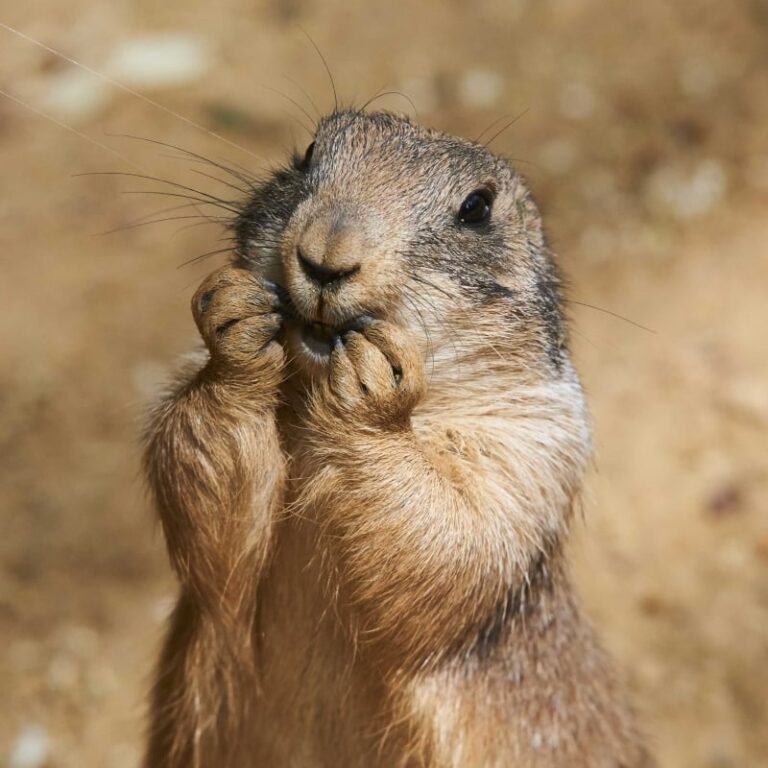Curious about prairie dogs and their undeniable cuteness? If you’ve ever found yourself typing “show me a picture of a prairie dog” into your search engine, you’re in for a treat! These unique creatures are not only adorable but also fascinating in their social behaviors and community structures. In this blog, we dive into the world of prairie dogs, exploring their habitats, habits, and why they have captured the hearts of many wildlife enthusiasts. Get ready to be enchanted by the charm of these furry critters as we showcase some of the most adorable prairie dog pictures that will make you want to adopt one as a pet!
Introduction: Exploring the World of Prairie Dogs
Prairie dogs are small, social rodents that belong to the squirrel family. They are known for their intricate underground burrow systems, complex social structures, and adorable appearances. These fascinating creatures can be found in the grasslands of North America and are essential to the ecosystem due to their ecological impact on the environment.
The Prairie Dog Family Structure
**Prarie dogs live in large colonies called “towns,” which consist of smaller family groups known as “coteries.” Each coterie typically comprises a dominant male, several females, and their offspring. This social structure helps them organize their burrow systems and defend against predators more effectively.**
Having evolved sophisticated forms of communication and social behavior, prairie dogs exhibit unique vocalizations and body language to convey messages within their communities.
Ecological Importance of Prairie Dogs
Prairie dogs are considered a keystone species in their ecosystem. Their grazing habits help maintain the grasslands by preventing the encroachment of woody plants and promoting biodiversity. Additionally, their burrows provide shelter for a variety of other wildlife, benefitting the overall richness of the prairie ecosystem.
- Prairie dogs aerate the soil, enhancing its fertility and supporting the growth of diverse plant species.
- They serve as a crucial food source for many predators, contributing to the ecological balance of the region.
- **The symbiotic relationships between prairie dogs and other species underscore their significance in the food chain.**

Appearance and Characteristics of Prairie Dogs
Prairie dogs are small, stout rodents that belong to the squirrel family. They have a unique appearance characterized by a short tail, small ears, and distinctive tan to reddish-brown fur with lighter underparts. Prairie dogs have a rounded body and a relatively short stature, typically measuring about 12 to 16 inches in length and weighing around 2 to 4 pounds.
Distinctive Features
One of the most striking features of prairie dogs is their intricate burrow systems that extend underground, providing shelter and protection from predators. They have sharp claws ideal for digging burrows and gathering food. Prairie dogs also have a complex communication system involving various vocalizations and body movements.
These adorable creatures are highly social animals that live in large colonies known as “towns.” Within these towns, prairie dogs exhibit fascinating behaviors such as grooming each other, playing, and standing guard to alert others of potential threats.
Physical Attributes
Prairie dogs have excellent eyesight and acute hearing, essential for detecting predators like hawks, eagles, and coyotes. They are herbivores, primarily consuming grasses, seeds, and vegetation found in their grassland habitats. Their diet also includes roots, fruits, and flowers.
In addition to their foraging behavior, prairie dogs are known for their sentinel duty, where individuals take turns standing watch for predators while others feed. This cooperative and vigilant behavior helps ensure the safety of the entire colony.
Habitat and Behavior of Prairie Dogs
Prairie dogs are burrowing rodents that are typically found in the grasslands of North America. They live in underground burrow systems called “towns” or “colonies,” which can cover extensive areas and include multiple entrances and exits. These social animals are known for their complex communication system that includes barks, chirps, and yips to warn others of potential threats.
Habitat
Prairie dogs inhabit open grasslands, prairies, and meadows where the soil is soft enough for burrowing. They construct elaborate underground tunnels that can extend for hundreds of feet, providing shelter from predators and extreme weather conditions. These burrows also help aerate the soil and promote plant growth.
- Prairie dogs are mainly found in the central and western parts of North America.
- They prefer areas with short grasses that allow them to keep a lookout for predators.
Behavior
Prairie dogs exhibit highly social behavior within their colonies. They live in family groups known as “coteries” that consist of a male, several females, and their offspring. Each group has a defined territory within the larger colony and defends it from neighboring prairie dogs.
- Prairie dogs are diurnal animals, meaning they are most active during the day.
- They engage in grooming behaviors to maintain social bonds and establish hierarchies within the colony.
Interesting Facts about Prairie Dogs
Prairie dogs are fascinating creatures that are part of the squirrel family. They are not dogs but got their name from the barking sound they make, similar to a dog. These social animals live in underground burrows in large colonies called “towns” with interconnected tunnels and chambers. Prairie dogs are highly intelligent and exhibit complex social behaviors.
Unique Communication System
Prairie dogs have a sophisticated language that includes different calls to warn the colony of approaching predators. They even have specific calls that describe the color and size of the predator. This communication system helps them stay vigilant and protect their community.
Ecological Engineers
Prairie dogs play a crucial role in maintaining grassland ecosystems. They are considered “ecological engineers” as their burrowing activities aerate the soil, increase water infiltration, and promote plant diversity. Their burrows also provide homes for a variety of other species.
Conservation Efforts for Prairie Dogs
Prairie dogs, vital to the ecosystem, face threats due to habitat loss and extermination efforts. Conservation initiatives have been gaining momentum to protect these adorable creatures.
Preservation of Habitat
Prairie dog populations depend on vast grasslands. Efforts are put into preserving these habitats to ensure the survival of prairie dog colonies. show me some picture of a prairie dog
Reintroduction Programs
Some areas have implemented reintroduction programs to bolster prairie dog populations. By relocating prairie dogs to suitable habitats, these programs aim to increase their numbers.
Frequently Asked Questions
- What do prairie dogs look like?
- Prairie dogs are small, stout rodents with short legs, sharp claws, and a distinctive tan to reddish-brown fur color. They have large eyes, rounded ears, and a short tail.
- Where can you find prairie dogs?
- Prairie dogs are primarily found in the grasslands of North America, particularly in the Great Plains region. They inhabit burrows in open areas such as prairies, meadows, and grassy plains.
- Are prairie dogs social animals?
- Yes, prairie dogs are highly social animals that live in large underground colonies called towns. They communicate with each other through a complex system of vocalizations and body language.
- What do prairie dogs eat?
- Prairie dogs are herbivores that primarily feed on grasses, roots, seeds, and vegetation. They play a crucial role in the ecosystem by grazing and creating diverse habitats for other wildlife.
- Why are prairie dogs important to the ecosystem?
- Prairie dogs are considered a keystone species because their grazing activities help maintain the health and biodiversity of grassland ecosystems. They also provide food and habitat for various other animals.
Unveiling the Charm of Prairie Dogs: A Final Look
In conclusion, prairie dogs are enchanting creatures that captivate us with their adorable features and unique behaviors. The quest to ‘show me a picture of a prairie dog’ has revealed the beauty of these animals and their importance in maintaining the ecosystem of the prairies. Through their intricate social structures and cute vocalizations, prairie dogs have earned a special place in our hearts.
By learning more about these remarkable creatures, we not only appreciate their cuteness but also recognize the need to conserve their habitats for the well-being of our planet. So next time you come across a prairie dog picture, remember the fascinating world they inhabit and the role they play in the natural balance. Let’s cherish and protect these lovable animals for generations to come!



